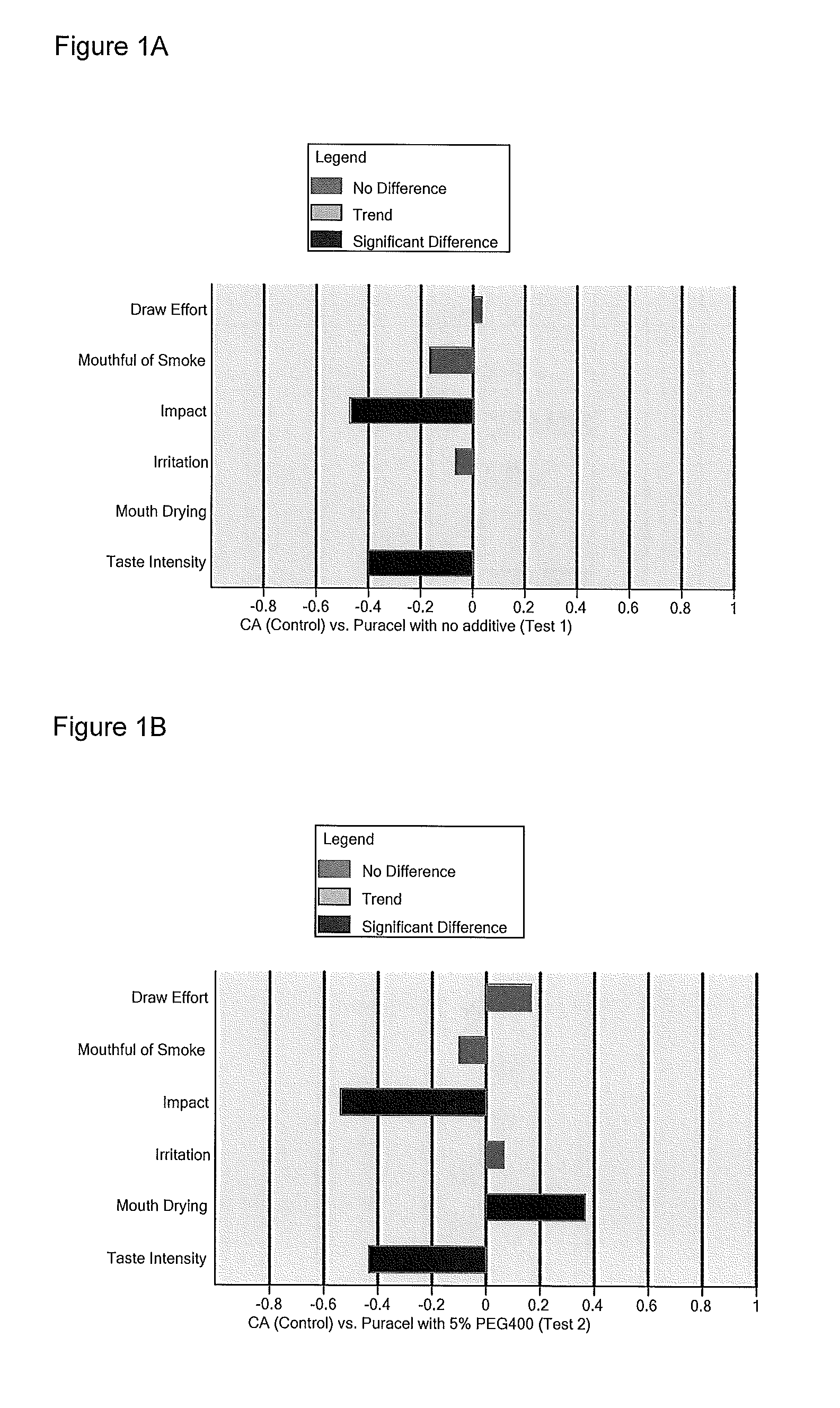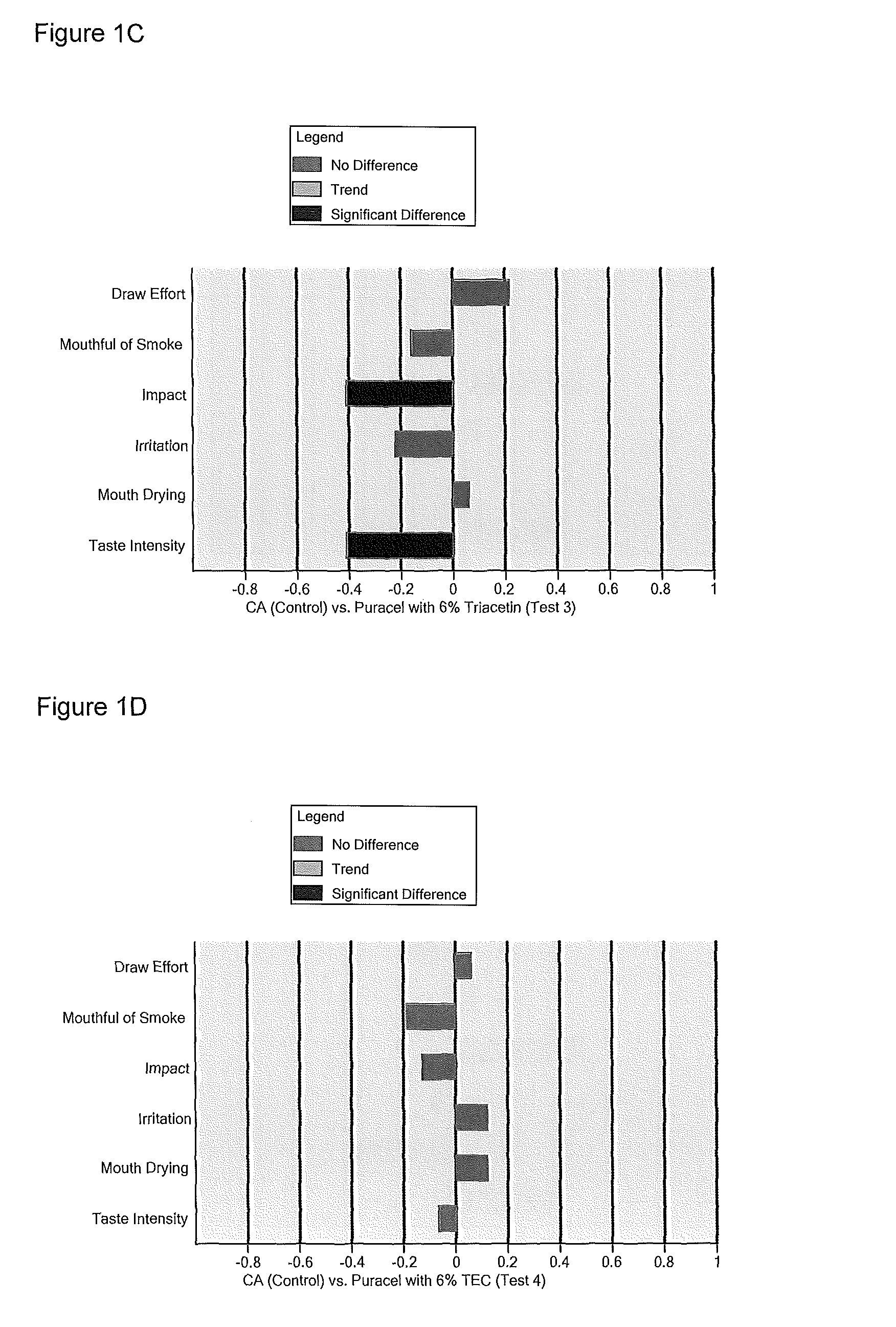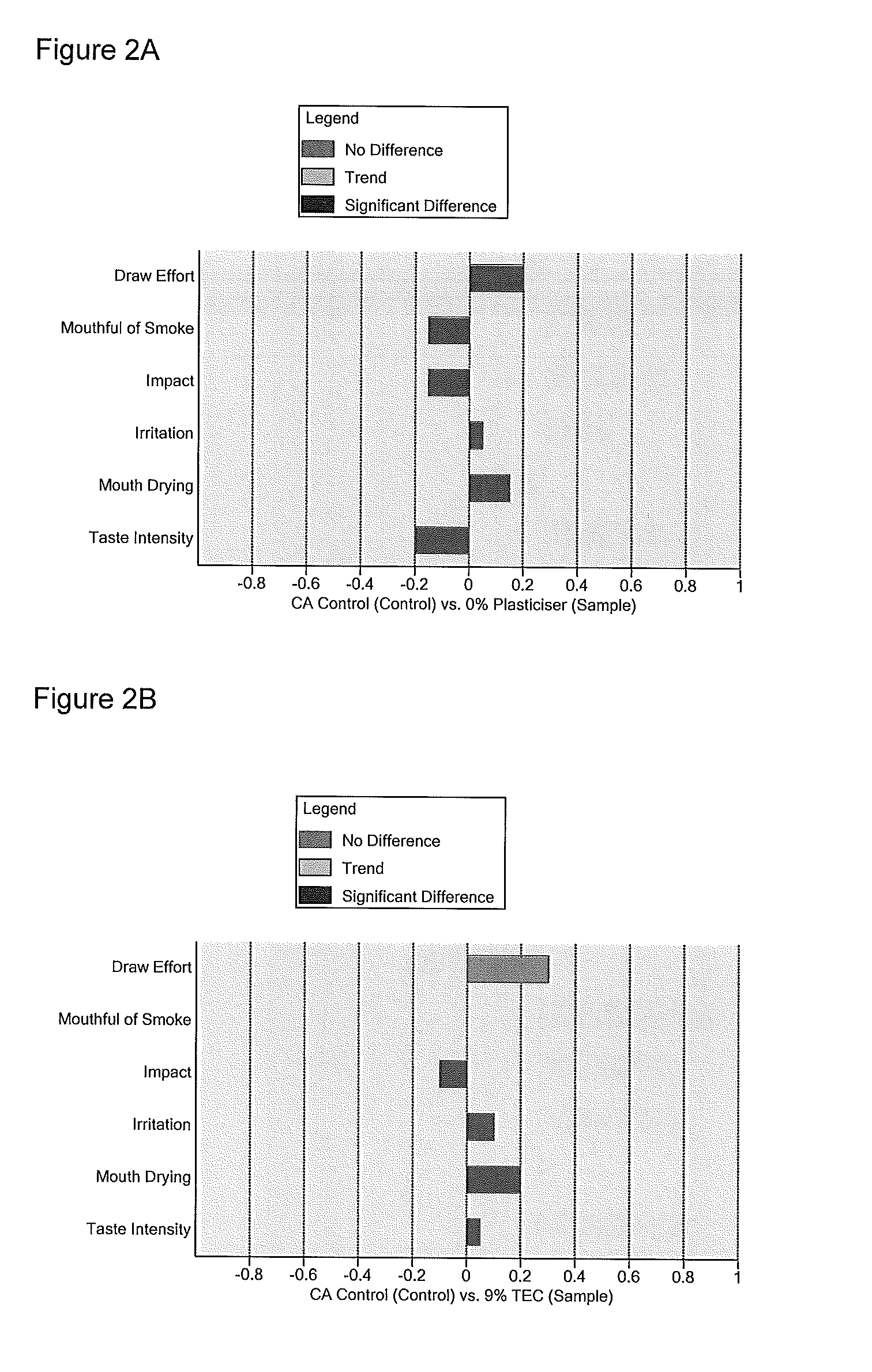Sheet filter materials with additives
a filter material and additive technology, applied in the field of sheet filter materials with additives, can solve the problems of poor biodegradability, slow degradation of cellulose acetate filter material, etc., and achieve the effect of improving the taste characteristics of smok
- Summary
- Abstract
- Description
- Claims
- Application Information
AI Technical Summary
Benefits of technology
Problems solved by technology
Method used
Image
Examples
example 1
[0072]The objective of this experiment was to determine whether there are any sensorial differences between a control cellulose acetate filter and four test samples.[0073]Control: Cellulose acetate filter[0074]Test 1: Puracel™ with no additive[0075]Test 2: Puracel™ with 5% PEG400[0076]Test 3: Puracel™ with 6% Triacetin[0077]Test 4: Puracel™ with 6% TEC
Methodology
[0078]The products used within this test were smoked between 28 and 29 Sep. 2009. Two Descriptive Paired Comparison Tests were carried out by 15-16 panellists for each sample. Coded cigarettes were used and the significance of any difference was assessed using the Binominal test.
[0079]The attributes that were considered during this test were: 1) Draw Effort, 2) Mouthful of Smoke, 3) Irritation, 4) Impact, 5) Mouth Drying and 6) Taste Intensity.
Results
[0080]CA (Control) vs Puracel™ with no additive (Test 1)—see FIG. 1A. It was found that for Impact and for Taste Intensity there was a statistically significant difference betwe...
example 2
[0087]The objective of this set of experiments was to determine if there are any sensorial differences between so-called “Parisienne” cellulose acetate control filter and 7 further test samples
Control: CA Control
[0088]Test 1 Puracel™ with 0% Plasticiser[0089]Test 2 Puracel™ with 9% TEC[0090]Test 3 Puracel™ with 9% TA[0091]Test 4 Puracel™ with 4.5% TEC, 4.5% PEG[0092]Test 5 Puracel™ with 4.5% TEC, 4.5% TA[0093]Test 6 Puracel™ with 4.5% TA, 4.5% PEG 400[0094]Test 7 Puracel™ with 3% TEC, 3% PEG 400, 3% TA
Methodology
[0095]The products used within this test were smoked between 29 June and 1 July, and on 6 Jul. 2010. A Descriptive Paired Comparison Test was carried out by 20 panellists for each sample. Coded cigarettes were used and the significance of any difference was assessed using the Binominal test.
[0096]The attributes used during this test were: 1) Draw Effort, 2) Mouthful of Smoke, 3) Impact, 4) Irritation, 5) Mouth Drying and 6) Taste Intensity.
Results
[0097]CA Control (Control 1)...
example 3
[0112]The objective of this experiment was to determine the effect on biodegradability of the use of a paper filter material in the place of conventional cellulose acetate. To do this, degradation under environmental conditions was assessed for a control cellulose acetate filter and three test samples.
Control: cellulose acetate filter
[0113]Test 1: Puracel™ (7 mg) with no additive[0114]Test 2: Puracel™ with 7% Triacetin[0115]Test 3: Puracel™ with 7% PEG 400
Methodology
[0116]The following protocol was used for measuring the disintegration of smoked cigarette butts into non-recognizable component parts that are readily dispersible. Tests were conducted on grass and the butts were placed within stainless steel cages (45 cm×30 cm) with 6 sub-compartments per cage. When the grass was periodically cut, care was taken not to disturb the samples.
[0117]The test site was located in a well drained, open area away from tall buildings and trees. Interference from humans and animal activity was kep...
PUM
 Login to View More
Login to View More Abstract
Description
Claims
Application Information
 Login to View More
Login to View More - R&D
- Intellectual Property
- Life Sciences
- Materials
- Tech Scout
- Unparalleled Data Quality
- Higher Quality Content
- 60% Fewer Hallucinations
Browse by: Latest US Patents, China's latest patents, Technical Efficacy Thesaurus, Application Domain, Technology Topic, Popular Technical Reports.
© 2025 PatSnap. All rights reserved.Legal|Privacy policy|Modern Slavery Act Transparency Statement|Sitemap|About US| Contact US: help@patsnap.com



